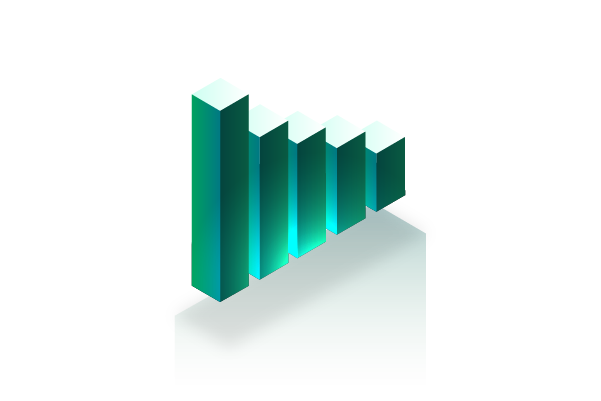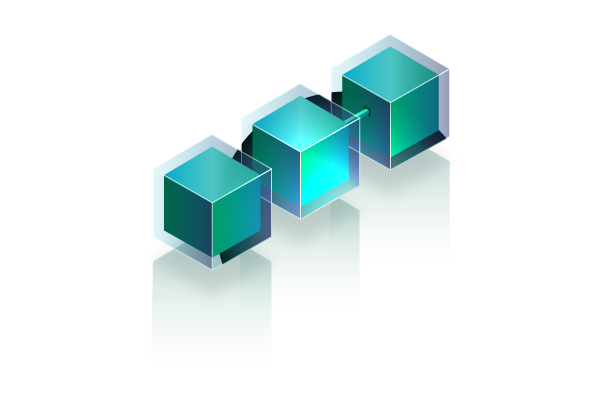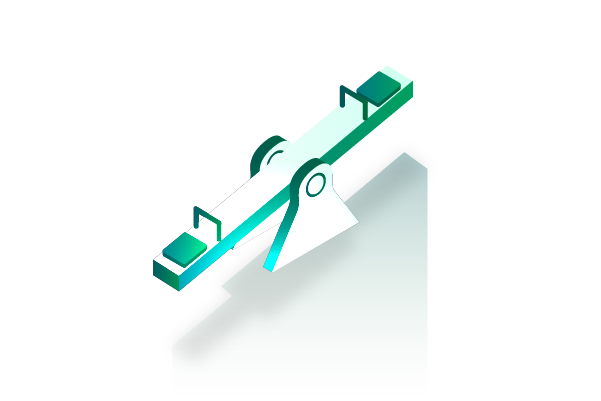As the blockchain landscape continues to evolve, Polkadot has emerged as a significant player with its innovative multi-chain architecture. However, as we move into 2025, several formidable competitors are vying for dominance in the decentralized ecosystem. This article delves into the top seven Polkadot competitors, providing insights into their unique propositions and how they stack up against the multi-chain protocol.
As we explore these seven alternatives, we’ll consider the broader implications for the blockchain industry and what these developments might mean for the future of decentralized finance (DeFi), enterprise solutions, and beyond. Get ready to uncover the potential game-changers in the blockchain space as we analyze each contender in detail.
The Rise of Multi-Chain Ecosystems

In recent years, the blockchain and cryptocurrency space has witnessed a significant shift towards the development and adoption of multi-chain ecosystems. This shift is primarily driven by several key factors, including scalability limitations of single-chain networks like Bitcoin and Ethereum, the demand for diverse use cases and functionalities, and the desire for increased decentralization and security.
The Need for Interoperability
One of the primary driving forces behind the rise of multi-chain ecosystems is the pressing need for interoperability. As the blockchain landscape has grown, so too has the number of separate chains and networks, each with its unique features and capabilities. However, this fragmentation has created challenges when it comes to transferring assets and data between different chains.
Interoperability solutions are crucial to enable seamless communication and collaboration between these various blockchains. Without interoperability, the full potential of blockchain technology cannot be realized, as users and developers are limited in their ability to access and utilize different blockchain networks.
Polkadot’s Role and Vision
Polkadot has emerged as a leading player in the multi-chain ecosystem space. Founded by Dr. Gavin Wood, one of the co-founders of Ethereum, Polkadot envisions a future where multiple blockchains can connect and communicate with each other in a secure and scalable manner. Polkadot’s architecture is designed to facilitate interoperability through its relay chain and parachain infrastructure.
Also Read: What Is Constellation Network? An Introduction for New Users
The relay chain serves as the main network that coordinates communication between parachains, which are individual blockchains connected to the Polkadot network. This architecture allows for a high degree of customization and specialization among parachains while maintaining a shared security framework.
Polkadot’s approach to multi-chain interoperability has gained significant attention and investment, as it aims to address many of the challenges that the blockchain industry faces, such as scalability, security, and governance. It also introduces the concept of shared security, where multiple parachains benefit from the security of the Polkadot relay chain, reducing the security risks associated with standalone blockchains.
Top 7 Polkadot Competitors to Consider in 2025

As Polkadot continues to gain traction and recognition in the blockchain and cryptocurrency industry, it faces competition from several other blockchain projects that aim to achieve similar goals or cater to specific niches within the blockchain ecosystem. These competitors are working on their own solutions for scalability, interoperability, and smart contract functionality. Here are seven notable competitors to Polkadot:
1. HeLa
HeLa Labs is dedicated to developing a next-generation Layer-1 blockchain protocol designed for real-world adoption. They focus on a modular Layer-1 solution, collaborating with renowned engineers and scientists alongside A*STAR IHPC. The HeLa Chain features include EVM compatibility, modularity, scalability, security, and an innovative decentralized digital identity management system.
It uses a stablecoin for gas fees to maintain transaction cost stability and improve user experience. The HeLa Labs ecosystem is committed to providing an inclusive platform for all builders to innovate and contribute to the future of Web3.
2. Ethereum 2.0
This is a significant upgrade to the Ethereum blockchain, intended to transition the network from a proof-of-work (PoW) to a proof-of-stake (PoS) consensus mechanism. This shift aims to address issues like energy efficiency, scalability, and transaction speed. Ethereum 2.0 (also known as Eth2 or Serenity) is expected to significantly reduce energy consumption and improve transaction throughput through sharding, which divides the network into smaller, more manageable pieces.
3. Cosmos
Cosmos is unique for its interoperability and scalability. It enables different blockchains to communicate with each other in a decentralized way, solving a significant challenge in the blockchain space. Its consensus model, Tendermint BFT, is a leader-based protocol which is more energy-efficient than PoW and allows for quick and secure transactions.
4. Avalanche
Avalanche is a high-performance blockchain platform focusing on transaction speed, low fees, and eco-friendliness. It’s particularly notable for its consensus mechanism, which is a variation of classical consensus and directed acyclic graph (DAG) protocols, allowing for rapid finalization of transactions, making it an attractive platform for DeFi applications and enterprise blockchain solutions.
5. Cardano
Developed with a research-first approach, Cardano is known for its rigorous academic scrutiny. It uses a unique dual-layer architecture (the Cardano Settlement Layer and the Cardano Computation Layer) to separate the ledger of account values from the reason why values are moved from one account to the other, thereby improving flexibility and scalability.
6. Solana
Solana stands out for its high throughput and low transaction costs, achieved through a unique combination of proof-of-history (PoH) and proof-of-stake (PoS) consensus mechanisms. This makes Solana exceptionally fast and capable of supporting applications that require high-speed trading and small transaction processing times.
7. Binance Smart Chain (BSC)
BSC is a blockchain network built for running smart contract-based applications. It operates in parallel with Binance’s native Binance Chain but offers an extended functionality with smart contract compatibility and is compatible with Ethereum Virtual Machine (EVM). This makes it easy for developers to port their projects over from Ethereum. BSC is known for its high throughput and low transaction fees, making it a popular choice for decentralized applications (dApps) and decentralized finance (DeFi) platforms.
Key Features and Differentiators

When discussing blockchain platforms or cryptocurrencies, several key features and differentiators often stand out, among which are consensus mechanisms, scalability solutions, and the community and developer ecosystems.
Consensus Mechanisms: PoS, DPoS, and Others
- Proof of Stake (PoS): A type of consensus mechanism used by blockchains to achieve distributed consensus. It requires users to hold and stake their tokens to become a validator in the network. The more you hold, the more likely you are to be chosen to validate transactions and create new blocks. It’s known for being more energy-efficient than Proof of Work (PoW).
- Delegated Proof of Stake (DPoS): A variation of PoS where token holders don’t directly validate transactions and create blocks. Instead, they elect delegates, who then validate transactions on their behalf. It often allows for quicker and more efficient processing of transactions.
- Other consensus mechanisms include Proof of Work (PoW), Proof of Authority (PoA), and more innovative or hybrid solutions being developed to address specific security, speed, or decentralization goals.
Scalability Solutions and Transaction Throughput
- Blockchains are continuously seeking to improve their scalability—their ability to handle a growing amount of work or transactions. This is vital as the more scalable a network, the more it can be used for widespread adoption.
- Solutions include sharding, layer 2 protocols (like Lightning Network for Bitcoin or Optimistic and ZK Rollups for Ethereum), and sidechains. Each has its way of increasing the number of transactions a network can handle, thus improving transaction speed and reducing costs.
Community and Developer Ecosystems
- The community includes all the users, investors, enthusiasts, and general supporters of a blockchain or cryptocurrency. A strong community can drive adoption, provide feedback, and foster a positive reputation.
- The developer ecosystem refers to the network of individuals and teams building on the blockchain. This includes core protocol developers as well as those creating decentralized applications (DApps), tools, and services. A vibrant developer ecosystem is crucial for innovation and the long-term success of any blockchain platform.
These are critical areas often discussed and compared when evaluating different blockchain technologies, and improvements or innovations in any of these areas can be a significant competitive advantage.
Industry Use Cases and Adoption
Blockchain technology has ushered in a new era of innovation across various industries, providing solutions to long-standing challenges and redefining traditional processes. As blockchain continues to evolve, its applications extend far beyond its initial use case as the underlying technology for cryptocurrencies like Bitcoin. In this context, we will explore three prominent industry use cases and their adoption:
DeFi and Financial Services
DeFi, short for Decentralized Finance, has emerged as a revolutionary use case for blockchain technology within the financial services industry. DeFi platforms leverage blockchain to create decentralized lending, borrowing, trading, and asset management solutions, eliminating the need for traditional intermediaries like banks and brokers.
This innovation has opened up access to financial services for underserved populations worldwide, offering opportunities for financial inclusion and enabling borderless transactions. DeFi protocols like Ethereum-based Compound, Aave, and MakerDAO have gained significant adoption, attracting billions of dollars in assets.
Supply Chain and Logistics
Blockchain technology has found a strong foothold in supply chain and logistics management. It allows for end-to-end transparency, traceability, and accountability in the movement of goods and products.
By recording every transaction and event on an immutable ledger, blockchain can reduce fraud, enhance the efficiency of supply chains, and ensure the authenticity of products. Companies like IBM with their IBM Food Trust and Walmart’s partnership with IBM for food traceability have implemented blockchain in supply chain management to improve food safety. Similarly, companies are using blockchain for tracking the authenticity of luxury goods, pharmaceuticals, and even carbon credits.
NFTs and Digital Identity
NFTs have created a significant buzz, especially in the world of art, entertainment, and collectibles. These unique digital assets are indivisible and verifiable on a blockchain, making them ideal for representing ownership and provenance of digital or physical items.
Artists, musicians, and creators can tokenize their work and sell it directly to buyers, ensuring creators receive a fair share of the value they generate. NFTs have also extended beyond the art world into virtual real estate, virtual goods in gaming, and even digital identity. Digital identity solutions built on blockchain enable individuals to have more control over their personal information, granting or revoking access as needed while enhancing security and privacy.
These three industry use cases demonstrate the diverse and transformative potential of blockchain technology. As adoption continues to grow, we can expect to see further innovation and integration in these and other sectors, ultimately reshaping the way businesses and individuals interact and transact in the digital world.
The Future of Blockchain Interoperability
Blockchain technology has evolved rapidly since its inception, and one of the most pressing challenges it faces today is achieving seamless interoperability among different blockchain networks. As the blockchain ecosystem continues to expand, with a multitude of blockchain platforms and applications emerging, ensuring that these networks can communicate and work together efficiently has become a critical issue. In this discussion, we will explore the future of blockchain interoperability, focusing on the role of standards and protocols, the importance of user-centric design, and making predictions for 2024 and beyond.
The Role of Standards and Protocols
One of the primary obstacles to achieving blockchain interoperability is the lack of standardized protocols and frameworks that enable different blockchains to interact with each other seamlessly. Currently, various blockchain networks employ their own unique protocols, consensus mechanisms, and data structures, making it challenging for them to communicate and share data effectively.
In the coming years, the development and adoption of industry-wide standards and interoperability protocols will be crucial. These standards will provide a common language for blockchain networks, allowing them to exchange information, assets, and smart contracts effortlessly. Organizations like the Interledger Protocol (ILP) and the World Wide Web Consortium (W3C) are actively working on creating such standards, and their efforts are expected to play a pivotal role in shaping the future of blockchain interoperability.
The Importance of User-Centric Design
While technical standards are essential, they must be complemented by a strong focus on user-centric design. Blockchain technology can be complex and intimidating for the average user, and this complexity often hinders widespread adoption. To overcome this barrier, user-friendly interfaces and intuitive applications must be developed to make blockchain technology more accessible to the masses.
Also Read: 10 Upcoming Crypto Airdrops to Know in 2025
In the future, successful blockchain projects will prioritize user experience and design, ensuring that even non-technical individuals can interact with blockchain applications effortlessly. Wallets, decentralized applications (dApps), and other blockchain tools will need to be as user-friendly as traditional applications to encourage broader adoption.
Conclusion
As we look towards 2025, the competition among blockchain platforms is heating up, with each of the seven Polkadot competitors bringing their unique vision and technology to the table. Ethereum 2.0, Cosmos, Avalanche, Tezos, Cardano, Solana, and Binance Smart Chain all offer compelling alternatives that push the boundaries of scalability, security, and interoperability.
The future of blockchain is not about one winner taking all, but about a diverse and interoperable ecosystem where different platforms specialize in various niches and applications. This healthy competition drives innovation, ensures robustness, and ultimately benefits the end-users with more choices, better services, and more innovative applications.
As the blockchain industry continues to mature, it’s clear that collaboration and competition among these platforms will shape the path forward. Whether you’re a developer, investor, or enthusiast, keeping an eye on these competitors and understanding their unique strengths and challenges will be key to navigating the future of decentralized technology.
In this rapidly evolving landscape, one thing is for sure: the journey towards a more interconnected and efficient blockchain ecosystem is just beginning, and the opportunities are as limitless as the technology itself.
Disclaimer: The information provided by HeLa Labs in this article is intended for general informational purposes and does not reflect the company’s opinion. It is not intended as investment advice or recommendations. Readers are strongly advised to conduct their own thorough research and consult with a qualified financial advisor before making any financial decisions.

Joshua Soriano
I am a writer specializing in decentralized systems, digital assets, and Web3 innovation. I develop research-driven explainers, case studies, and thought leadership that connect blockchain infrastructure, smart contract design, and tokenization models to real-world outcomes.
My work focuses on translating complex technical concepts into clear, actionable narratives for builders, businesses, and investors, highlighting transparency, security, and operational efficiency. Each piece blends primary-source research, protocol documentation, and practitioner insights to surface what matters for adoption and risk reduction, helping teams make informed decisions with precise, accessible content.
- Joshua Soriano#molongui-disabled-link
- Joshua Soriano#molongui-disabled-link
- Joshua Soriano#molongui-disabled-link
- Joshua Soriano#molongui-disabled-link

